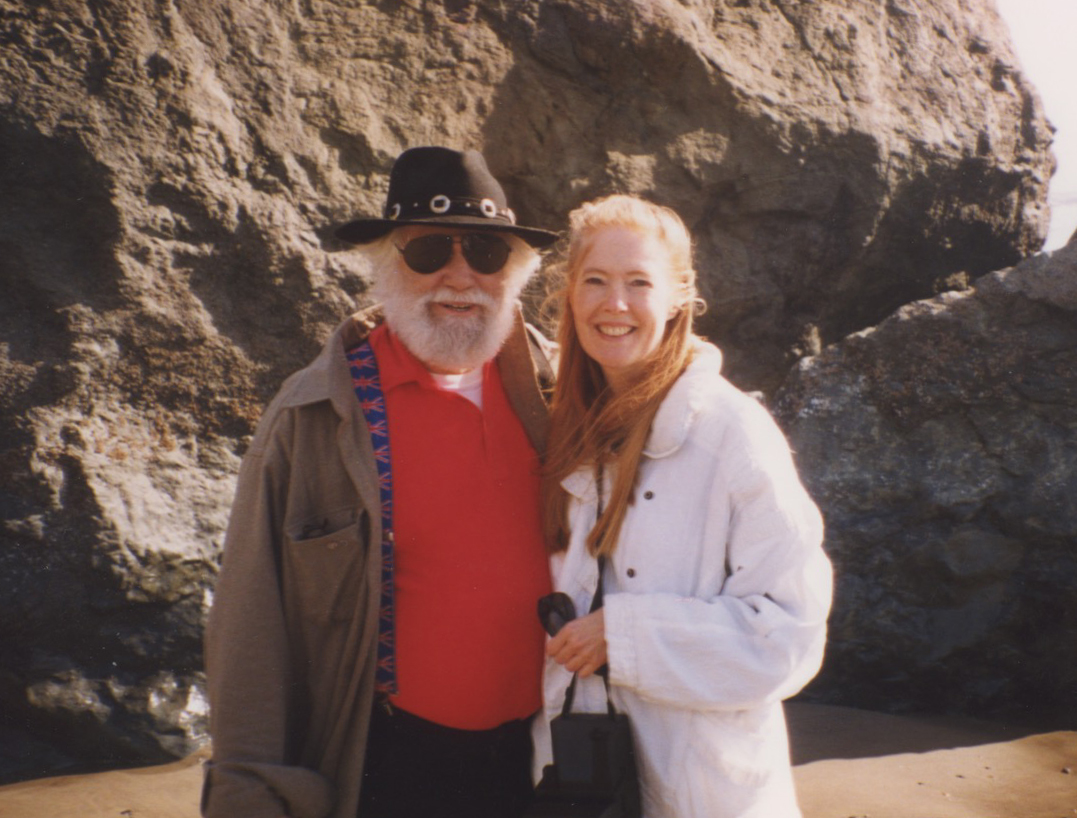TO A LIGHTHOUSE – Part III

On the road again, we head north to the town of Pescadero and Duarte’s restaurant, famous for its artichoke soup. It’s a rustic tavern with wood-paneled walls and huntsmen’s trophies overhead—sets of deer antlers with and without heads. I marvel again at how beautiful deer faces are and wonder how anyone can bear to shoot them.
Earl tells me about his friend Hank from his Greenwich Village days answering a classified ad for a used something-or-other—and after going to buy it from the seller, commenting to Earl ingenuously, “And isn’t it a coincidence that his name was Norman Mailer, just like the novelist?” Earl’s circle of friends and acquaintances back then included Jack Kerouac, as well as Mailer, and other up-and-coming writers and artists of the time. He lived on the fourth floor of what had been a factory with his wife Moira, who was also a painter—and looked like the Egyptian queen Nefertiti, he swears. The “loft,” as they called it, was 2500 square feet (with the requisite skylights), which his friend Jimmy and he partitioned into three studios and a living space, using the wood from packing crates they scavenged in the neighborhood. He and Moira had a Siamese cat named Sheba that gave birth to a strange litter of kittens—Eightball, Oddball, Blackball, and Fink, they called them. Eightball, the one they kept, was huge and curly-haired, which led them to speculate he might have been sired by a bobcat. He used to climb up the back of Earl’s easel and jump up into one of the skylights, where he hunkered down on a beam and watched Earl paint with rapt attention for hours on end.
“Did you and Moira have a church wedding?” I ask. They were married by a Unitarian minister, he says, and Moira wore a blue cocktail dress. They had to cut back the guest list when her father, a graphic artist who worked for Disney, among other jobs, went bankrupt for the umpteenth time, and they realized they were going to have to pay for the wedding themselves. But the celebrated painter Hans Hoffman, Earl’s mentor, attended with his wife. And their weird friend Syd, who, after poring over the paintings in the Metropolitan Museum, showed up at the Hoffman School, announcing at the reception desk he wanted to learn to paint like Delacroix. “That’s good enough,” said Hoffman, who happened to be standing nearby—and promptly admitted him.
When Earl talks about Moira, I think to myself, “She was the love of his life.” And I wonder how much competition had to do with the failure of their marriage. “If I was the better painter, she was the better artist,” Earl once told me. But the art world has always been an exclusive men’s club—and so while Earl won prizes and was offered teaching positions, Moira was left to watch from the sidelines.